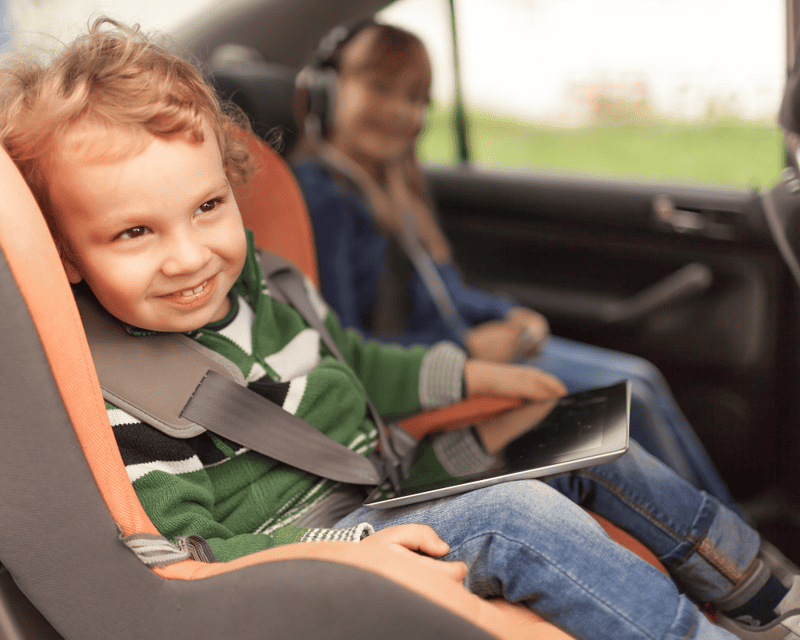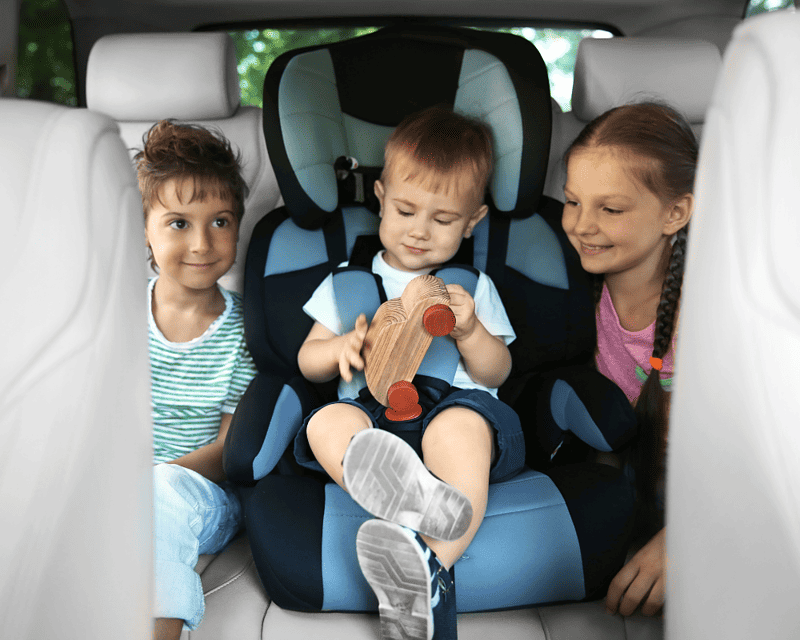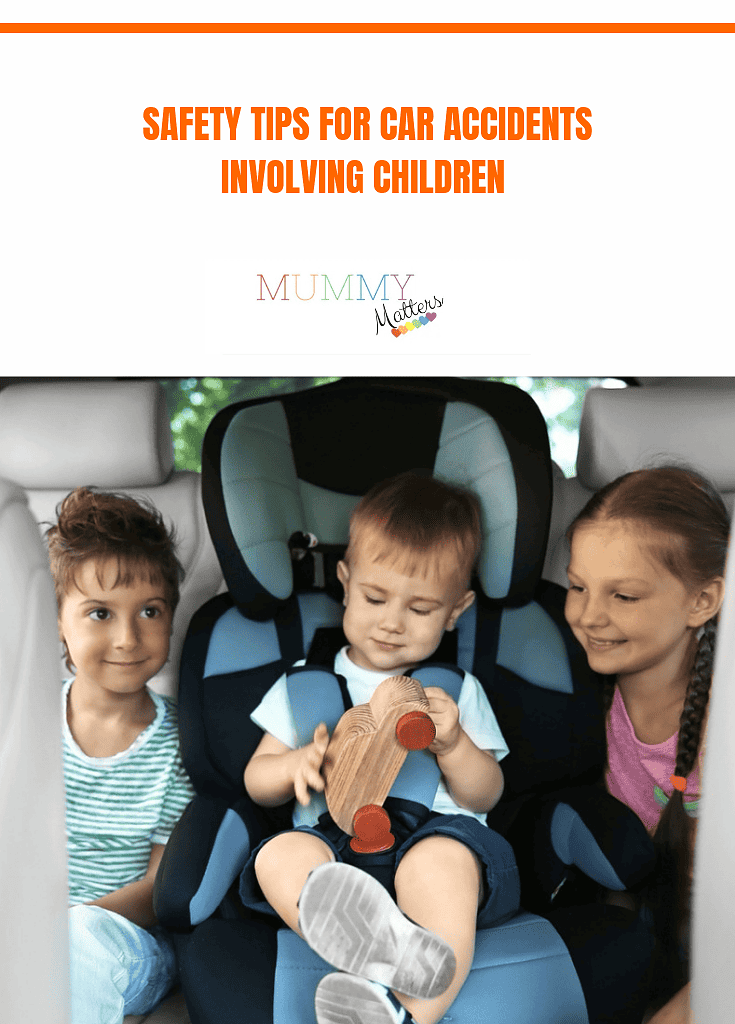Safety on the road is always important, especially if you have a little one in the car. Children are vulnerable to injuries from car accidents, and you serve as their best line of defence against any harm.
Car accidents can happen in many different ways. The severe and life-changing injuries from taxi cab accidents and similar commercial vehicles are just one example of how the other cars on the road and their purpose for driving can increase your odds of getting into a collision.
Thankfully, you can keep your child safe by enacting specific safety measures whenever your kid is in the car. Let’s get into these safety tips now.
Proper Seating Arrangement

Arguably, the most important starting place is to ensure proper seating arrangement. This has two important elements to it that you must remember.
Firstly, where your child sits is crucial. Kids under the age of 13 should always sit in the backseat. Front seats may seem more fun to your child, but they have airbags that can be extremely dangerous for kids should they deploy.
On top of this, having your child sit in the back places them further away from the point of impact should you have a head-on collision or rear-end another driver. The back seats have far more room, which is critical to creating distance between your child and a potential hazard during an accident.
Location is important, and how your child sits is also relevant. Specifically, this brings up the use of car and booster seats. You should use the appropriate car seat setup depending on your child’s size and age.
Assuming your child is roughly the same size as their peers, a rear-facing car seat should be used until it is outgrown around age 2-3. At this point, they should be graduated to a forward-facing car seat. This should be used until your child is too large, generally around ages 5-7.
After this stage, you should find a high-quality booster seat for the rest of your backseat days. This should be used through age 10-12 or until your child can safely sit in a standard seat with a seat belt.
When you keep your child in the back seat with the proper seating choice, you greatly increase their safety during an accident.
Always Wear Seatbelts
Speaking of seatbelts, your child should always wear their seatbelt once they are big enough.
While seatbelts won’t protect against accidents, they significantly reduce the chance of serious injury or death when a crash occurs. Being restrained inside your car during the chaos, high velocity, and moving parts keeps you in a metal cage that offers at least some protection against the road and other cars.
This is why accidents lacking seat belt use tend to result in fatalities. Having your child understand the importance of buckling up for every drive is crucial in protecting them when disaster strikes unexpectedly.
A good way to achieve this is by setting a good example yourself. If you always buckle your seat belt and refuse to start driving before everyone is buckled up, your kids will understand that you are serious, and they will follow suit.
It is also critical for you to wear your seatbelt to avoid injuring your child during an accident. If you are not adequately restrained, you can become a danger if you are sent toward your loved one.
With this in mind, seatbelts should never be ignored. Encourage your kids to always wear theirs, set a good example yourself, and refuse to drive without everyone wearing a seatbelt to keep your kids safe in the car.
Avoid Impaired Driving
It is also crucial that you avoid playing any role in an accident.
Specifically, this means refraining from any form of impaired driving. This can include dangerous behaviour like driving while inebriated or under the influence of another drug. Still, it also applies to distractions like looking at your phone or taking your eyes off the road to look in the backseat.
Even if you don’t have bad intentions, diverting your focus from the road in any way is an impairment that increases the chances of an accident and injury for you and your child.
Considering this, you should always strive to drive as responsibly as possible. Always drive sober in a clear headspace, don’t take your eyes off the road, avoid driving when tired, and pull over if you need to address something.
Constant Supervision

A final suggestion to help keep your child safe is to never leave them unsupervised around your car.
Even if you give them clear instructions and boundaries, kids are curious, and moments without supervision are when accidents and mistakes happen due to overwhelming curiosity.
A few accidents that can occur if your child is left alone in the car include accidentally shifting the car out of being parked and rolling into traffic or being hit by a parked car. There’s also the possibility of them getting locked in the trunk and suffocating or experiencing heat stroke if left in the car during a warm day or for too long.
Cars are only meant to be used when you’re on the road. They are not toys; your child must understand this and be supervised to ensure they don’t accidentally hurt themselves.
Closing Thoughts
Cars and driving are an unavoidable part of life that comes with many responsibilities and the possibility of serious injuries if accidents happen. Your kids depend on you to keep them safe on the road, meaning you must do everything you can to drive safely and protect them.
To increase the safety of your children in the car, a few strategies are particularly helpful. This includes seating your kids in the backseat, using the proper seating arrangement for their size/age, always wearing seatbelts, avoiding impaired driving, and constantly supervising your child around your car.
Car accidents can be especially traumatic for young kids, and they will likely make it difficult to feel comfortable in the car again. Protect their sense of security first by steering them clear of any injuries and trauma by only exhibiting responsible driving behaviours.

